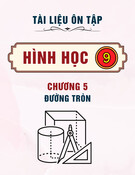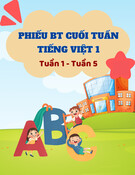LESSON PLAN
Ư Ễ Ị Ị Instructors: Mrs. TR NH TH MAI – Mrs. NGÔ NGUY N NH VI.
Ầ Ạ ƯƠ NG. Ị Student’s names: TR N TH TRÀ MY– PH M THÙY D
Time: Tuesday, March 14th, 2017.
Lesson: Unit 12 – Music.
Section: A. Reading.
Class: 10A7 and 10A8.
English level: Basic.
Number of Students: 2533.
Period: 90 minutes.
I/ Aims: By the end of the lesson:
Students develop skimming and scanning skill, guessing meaning in context.
Students learn more new words about the topic ‘ music’.
Students know the importance of music in their lives.
II/ Method:
Audio lingual Method.
III/ Teaching aids:
Textbook, Blackboard, Chalk, Handout, Microsolf Powerpoint presentation.
IV/ Teaching procedure:
Greeting New lesson
READING 1
Warm up (7ms)
Teacher’s activities Students’activities Content
Ss listen to the introduction carefully and play the game.
You raise me up: Pop music. (Westlife) Don’t let me down: Electronic dance music. (The Chainsmokers)
T welcomes the class. Before we start our lesson, T has a mini game for Ss. T divides Ss into 2 groups.
Work in groups.
T will play 2 audio files for Ss to listen. When the audio file is played, any group who can guess the kind of music that audio file can raise their hands to answer. If the answer is correct, that group will give the present. You raise me up: Pop music. (Westlife) Don’t let me down: Electronic dance music. (The Chainsmokers) T keeps control over the game, gives feedback to student’s answers and checks their answers.
Ss answer T’s questions. Individual.
_T leads in the topic of the lesson. T asks Ss some questions: 1. How often do you listen to music? 2. What kind of music do you like best?
Music has become an integral part of our life. To know more about its importance, today we will learn about Unit 12: Music.
T writes the topic on the board and asks Ss take note.
Ss listen and take note the topic of new lesson. Unit 12: Music. A. Reading Textbook: English 10. Page: 124 and 125. Unit 12: Music. A. Reading
Pre reading (20ms)
Paragraph 1:
Ss listen their teacher’s introduction.
T introduces the new lesson. “ Now, we learn about paragraph 1”.
T plays 1 audio file for Ss. Ss watch the TV and listen to the tape.
Ss listen and underline the new words. T asks Ss to listen and underline the new words.
Ss guess the meaning of words.
“There are two things that make humans different from all other animals. They are language and music. Music is clearly different from language. However, people can use it to communicate especially their emotions. Like reading, writing and speaking, music can express ideas, thoughts and feelings. It can express one's anger, love, hate or friendship; it can also convey one's hopes and dreams.”
Vocabulary: communicate (v) /kə ˈmjuːnɪkeɪt/: giao ti p.ế
ễ ả ỏ .
T shows vocabulary and pictures. “ What does it mean? ” Vocabulary communicate (v) /kə ˈmjuːnɪkeɪt/: giao ti p.ế => communication (n) /kəˌmjuːnɪˈkeɪʃn/: sự liên l c.ạ emotion (n) /ɪˈməʊʃn/: ả c m xúc. express (v) /ɪkˈspres/: di n t , bày t thought (n) /θɔːt/: suy
ậ
ề ệ
ề ạ nghĩ. => think (v) /θɪŋk/: nghĩ. anger (n) /ˈæŋɡə(r)/: sự ứ t c gi n. convey (v) /kənˈveɪ/: truy n ( âm thanh, l nh, tin), truy n đ t.
ự Ss listen and repeat.
=> communication (n) /kə ˌmjuːnɪˈkeɪʃn/: s liên l c. ạ emotion (n) /ɪˈməʊʃn/: ả c m xúc. T reads vocabulary once. Then T asks whole class to listen and repeat.
Individual.
T invites some Ss to repeat again.
Ss take notes.
express (v) /ɪkˈspres/: di nễ ả t , bày t ỏ .
T gives Ss 1 minutes to write down vocabulary. T plays 1 audio file again for Ss. Ss watch the TV and listen to the tape again.
thought (n) /θɔːt/: suy nghĩ.
ậ => think (v) /θɪŋk/: nghĩ. anger (n) /ˈæŋɡə(r)/: s ự ứ t c gi n.
ệ ề
ề ạ convey (v) /kənˈveɪ/: truy n ( âm thanh, l nh, tin), truy n đ t.
While reading (10ms)
T shows task 1 on the TV.
Task 1: Choose the best answer for each question.
Ss listen to their teacher’s introduction and try to finish task 1.
Task 1: Choose the best answer for each question. 1. What are the two things that make humans different from other animals? A. sound and voice B. language and sound C. music and voice D. language and music 2. What can music help to communicate? A. love B. hate C. emotions D. anger 3. Like reading, writing and speaking, music can express ideas, ______.
A. emotions B. feelings C. thoughts and feelings D. A and C are correct 4. Music can _____ one’s hopes and dreams.
Work in groups.
1. What are the two things that make humans different from other animals? A. sound and voice B. language and sound C. music and voice D. language and music 2. What can music help to communicate? A. love B. hate C. emotions D. anger 3. Like reading, writing and speaking, music can express ideas, ______. A. emotions B. feelings C. thoughts and feelings D. A and C are correct 4. Music can _____ one’s hopes and dreams. A. give B. convey C. think D. keep Answers: 1/ D 2/ C 3/ C 4/ B
Ss go to the board and write their answers.
A. give B. convey C. think D. keep T divides Ss into 4 groups. T asks each group to do this task within 2 minutes. If the answer is correct, each member of that group will get one point. T checks their answers.
Ss check their answers.
Ss take notes.
T shows Ss the answers on the TV.
Post reading (8ms)
T has a mini game for Ss.
Ss listen to the introduction carefully and play the game. Faded remix. We don’t talk anymore remix.
Work in groups.
T divides Ss into 2 groups.
Ss go to the board and write the new words. , bày t ỏ .
ậ
ệ ề
ề ạ
Vocabulary: communicate (v) /kə ˈmjuːnɪkeɪt/: giao ti p.ế emotion (n) /ɪˈməʊʃn/: ả c m xúc. express (v) /ɪkˈspres/: di nễ ả t anger (n) /ˈæŋɡə(r)/: s ự ứ t c gi n. convey (v) /kənˈveɪ/: truy n ( âm thanh, l nh, tin), truy n đ t.
Ss take notes.
*Homework: Learn by heart the new words. Prepare Unit 12 – Language focus.
T gives each group a pen. T asks each member to pass the pen until the song pauses. Anyone who holds a pen will be fined. T asks that student to go to the board and writes new words of the lesson. T gives the present for the group with the highest score. T reminds Ss to do homework. *Homework: Learn by heart the new words. Prepare Unit 10 – Language focus.





![Bài tập so sánh hơn và so sánh nhất của tính từ [kèm đáp án/mới nhất]](https://cdn.tailieu.vn/images/document/thumbnail/2025/20250808/nhatlinhluong27@gmail.com/135x160/77671754900604.jpg)
![Tài liệu tham khảo Tiếng Anh lớp 8 [mới nhất/hay nhất/chuẩn nhất]](https://cdn.tailieu.vn/images/document/thumbnail/2025/20250806/anhvan.knndl.htc@gmail.com/135x160/54311754535084.jpg)
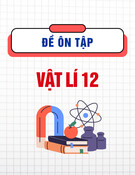
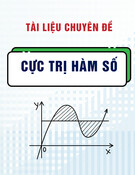
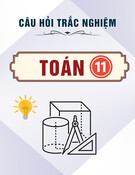
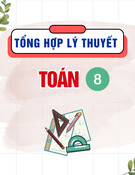
![Tài liệu Lý thuyết và Bài tập Tiếng Anh lớp 6 [Mới nhất]](https://cdn.tailieu.vn/images/document/thumbnail/2025/20250802/hoihoangdang@gmail.com/135x160/18041754292798.jpg)


